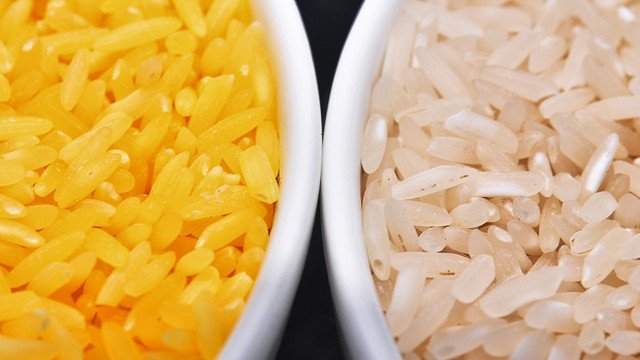SUMMARY
This is AI generated summarization, which may have errors. For context, always refer to the full article.
 There’s no denying that Golden Rice – as other genetically modified organisms (GMOs) – is an astounding scientific feat. But so was the nuclear bomb. This comparison is not a simplistic attempt to equate one with the other. But its purpose is to drive home the point that while science technology have given us countless benefits, it is a realm that, just like politics, the public must be able to critique in order for society to make informed opinions and choices.
There’s no denying that Golden Rice – as other genetically modified organisms (GMOs) – is an astounding scientific feat. But so was the nuclear bomb. This comparison is not a simplistic attempt to equate one with the other. But its purpose is to drive home the point that while science technology have given us countless benefits, it is a realm that, just like politics, the public must be able to critique in order for society to make informed opinions and choices.
Unfortunately, this democratic feature seems to be in contradiction with what promoters of Golden Rice and other GMOs would like to see happen. People who question the necessity of Golden Rice or GMOs in general, and who voice out their ideas and opinions, are subjected to public name-calling and bullying, or worse, intimidated with lawsuits.
So what are Golden Rice developers afraid of? It may sound like an eerie coincidence, but the answers are the same things that totalitarian states despise: the right questions, people who ask them, and the voices of those who matter – in this case, the poor, the farmers, mothers and consumers.
Consider the following facts:
Rice varieties do not naturally contain vitamin A. Golden Rice, developed to put vitamin A producing genetic material from another organism into rice, is currently being promoted as a solution to vitamin A deficiency (VAD). This prescribed solution has taken decades and almost around 100 million US dollars to create.
But even after creating Golden Rice, the developers themselves admit “the best way to avoid micronutrient deficiencies is by way of a varied diet, rich in vegetables, fruits and animal products.” They also say that the use of Golden Rice to alleviate VAD should be done in conjunction with already existing VAD eradication efforts.
Curbing Vitamin A deficiency?
Meanwhile, in the three decades it took to develop Golden Rice, countries such as Bangladesh and the Philippines have been making major strides in curbing VAD by food fortification, supplementation and kitchen and community vegetable garden programs. In the Philippines these efforts taken over a 15 year period, halved VAD cases as well as other micronutrient deficiencies such as iodine deficiency. These projects did not require decades to develop and cost considerably less than US $100 million.
In addition, there are many natural food sources which already contain vitamin A and which do not require decades of research or funding for genetic modification. Common examples include squash, carrots, and sweet potato (kamote) – crops, which grow everywhere in the Philippines and which are cheaper to cultivate than rice. One is therefore tempted to ask why GMO promoters have taken the trouble to genetically engineer vitamin A-lacking rice into Golden Rice when a cup of “lowly” kamote can easily provide more than six times the vitamin A found in a cup of Golden Rice?
While scientific studies on Golden Rice abound, these are limited to papers from the developers of the technology themselves or their promoters. As with all GMOs, there are no independent studies to verify the safety of transgenic crops because access to the research materials is severely restricted.
What questions can we glean from the above?
If the best way to address VAD is through provision of access to a diverse diet, then why are the millions of dollars being used for GMO research not spent instead to support the best, proven and lower-costing solution?
As its developers claim, Golden Rice, once approved, should be just one component of already existing and successful VAD eradication programs. It does not sound sensible that millions are being spent on what is merely a supplemental solution at best, while the main solutions themselves are overlooked?
Moreover, how can Golden Rice be a sustainable solution to micronutrient deficiency when it encourages the poor’s dependence on just one type of food, contravening the need to give the poor access to more diverse diets?
In the absence of independently verified safety studies, shouldn’t Golden Rice be proven safe first before it is commercialized, rather than assuming that it is safe until it is proven dangerous?
Given the above, do we need Golden Rice at all?

If the poor had a voice in this debate they probably wouldn’t be asking for Golden Rice. It’s hard to imagine that the onset of VAD will send them knocking on scientists’ doors to ask for genetically engineered rice to address their micronutrient deficits. It is safe to assume, however, that most everyone including the poor, would desire to have better access to a balanced and nutritious diet. To be clear, Golden Rice is not a solution that poor has asked for, but a prescription being pushed upon them by Western scientists and their corporate backers.
According to its developers, Golden Rice “can be a technological fix, a bandage that can help address a clear nutritional problem until we can solve the much harder problem of poverty.” Now, there are fixes that lead to the long-term solution, and fixes that detract from it. Golden Rice falls into the latter category. A key part of the long-term solution to poverty is people’s access to food and seeds. If these seeds are controlled by a global oligopoly of seed manufacturers—who also happen to hold the patents to Golden Rice and virtually all GMO crop development—then the prospects of a poverty-free future become a lot dimmer.
Farmers’ voices
Which brings us to our farmers. The idea of patents and royalties for crops and seeds are not popular concepts in developing countries. For centuries, farmers have controlled the seeds they have planted. It is their collective toil and work on rice seeds that have given the global community the diversity of rice that we now enjoy. The tens of thousands of rice varieties developed for different uses and growing conditions, have been provided by farmers to the world for free.
Would farmers plant Golden Rice knowing that these genetically modified seeds can contaminate and possibly endanger the thousands of natural rice varieties, which they have freely developed and had full ownership of for centuries?
Farmers are not clueless about the endgame lurking behind the aggressive global promotion of Golden Rice. While its developers had waived patents and royalties for so-called humanitarian reasons, a nagging suspicion persists that proponents are using this to prepare the ground for public acceptance of GMO crops, and sweeten the bitter pill of greater and more insidious corporate control over the global food supply.
Filipino farmers did speak out in August this year in an act of frustration when 400 of them uprooted a Golden Rice field experiment in Bicol. The farmers were greatly concerned about the possibility of GMO contamination of their organic and traditional rice varieties. If genetic contamination occurred due to these open field trials, the country’s rice heritage would be in jeopardy. This action by farmers, denounced by GMO pushers as an act of vandalism, was actually a defensive maneuver by local farmers to protect their rice and their livelihoods against the dangers of unwanted genetic pollution.
The Catholic Bishops’ Conference of the Philippines (CBCP) has also voiced its concern about the risks of Golden Rice. In Mindanao, the Muslim Mindanao Halal Certification Board (MMHCB), considers GMO food, including Golden Rice, as masbooh—or best to avoid, given the absence of scientific consensus regarding its safety.
As for consumers, food safety is a primary concern. GMO crops have never been tested for safety in human beings. The Golden Rice experiments conducted in the Philippines were meant to test the crop’s suitability to planting conditions—not whether they would be safe to eat by humans, let alone children.
Last May, Green Moms, a nationwide coalition of mothers advocating organic food and breastfeeding practices in the Philippines, conducted a creative protest against Golden Rice. These mothers believe that the best way to address VAD and malnutrition is not through Golden Rice, but through feeding children with available products like breast milk and a diverse diet of fruits, vegetables, fish and meat products from ecological farms. Filipino mothers are not the only parents concerned about the safety of feeding Golden Rice to children. Parents in China, whose children were made to eat Golden Rice in a scandalous experiment were outraged when they found out their children were given GMO rice without their knowledge and consent.
If one listens to the pronouncements being made by the Golden Rice pushers, which include the IRRI, corporate backed scientists, USAID, and their mouthpieces in the media, one gets the impression that Golden Rice is a perfect solution, that there is completely nothing wrong or risky about it, and that the true intentions of the donors and scientists who created this wonder crop are completely altruistic.
Here it helps to be reminded that the true and ultimate beneficiaries of Golden Rice are the multinational agro-chemical corporations, who have already invested billions of dollars in developing and propagating GMO crops around the globe. There is a massive effort underway to effect corporate control over the world’s staple crop production via genetic engineering, and Golden Rice is the ambassador of this mission in the rice producing and eating nations of the world.
Von Hernandez is currently the Executive Director of Greenpeace Southeast Asia and was awarded the Goldman Environmental Prize in 2003. He is also the convenor and current President of the Ecowaste Coalition.
The other side of the debate: “Why I support Golden Rice,” by Dr Michael Purugganan (Oct 22, 2013)
Add a comment
How does this make you feel?
There are no comments yet. Add your comment to start the conversation.